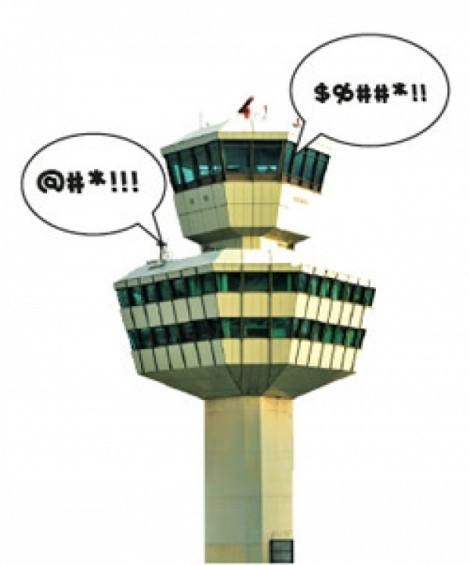
In Salt Lake City, that responsibility falls on more than 228 controllers. Twenty-nine of them peer from the windows of Salt Lake City International Airport’s flight-control tower. But the majority of them—199—sit at their controls in the Salt Lake City Air Route Traffic Control Center (better known by employees as “the center.”) There are 20 such centers nationwide. Controllers who staff the Salt Lake City center coordinate the passage of every plane flying higher than 23,000 feet in an area encompassing seven states and stretching from the Canadian border to the Pacific Ocean and south to Utah.
Needless to say, controllers feel the pressure. The lives of passengers depend upon controllers being on point every second of the day.
“When you have thunderstorms to the east of Salt Lake City and departures are coming out one after another, that’s pretty stressful,” says Mark Prestrude, an air-traffic controller in Salt Lake City.
But since September 3, 2006, the nation’s air-traffic controllers have not been a happy bunch. That’s because the FAA, their employer, forced a contract on their union, known collectively as the National Air Traffic Controllers’ Association (NATCA). And there’s nothing they can do about it.
Ever since President Ronald Reagan fired 80 percent of the nation’s controllers during a 1981 strike, NATCA has been all but emasculated —a union unable to strike. This leaves NATCA with few bargaining tools when negotiating with the FAA.
So, this past September’s contract—which controllers call “forced work rules”— has been a bitter pill to swallow. Besides reducing starting pay by 30 percent from an average starting salary of $45,000, the FAA lowered the number of controllers at the nation’s 750 air-traffic facilities, and imposed work rules some union members describe as “petty,” such as a dress code. The effect of these changes, controllers say, is not only the overworking of employees but an increased chance of accidents.
And now, many of the people hired after the 1981 strike are retiring, and their ranks aren’t being replenished quickly enough, says the union. Members argue that a new lower entry-level salary—$32,000 on average—and an increasingly unhappy work place isn’t doing much to attract people to the career.
“Since September 3 last year, when the FAA imposed their contract, retirements have far exceeded their expectations, morale is down and staffing levels continue to deteriorate because staffers are tired of having draconian rules put upon them,” says Scott Farrow, the union’s northwest mountain regional vice president.
The FAA differs in its assessment. Its representative says that new recruits are coming in as needed and staffing levels are healthy. Addressing union claims about safety issues, FAA spokeswomen Laura Brown, says, “In this period last year, our operational errors went down for the first time in seven years. We are in the safest period in aviation history in terms of fatal commercial crashes.” The staffing reductions, she says, were imposed after the FAA decided the numbers previously set by the union and local air-traffic centers were too high. Brown disagrees with union complaints about low starting pay. After one year, she says, controllers’ annual compensation rises to $50,000.
The reasons for the reductions in pay as well as the lower staffing numbers come in part from the FAA’s need for cash. The FAA must reduce its budget and invest in new technology, Brown says, and it can’t afford to pay controllers what they used to get, while simultaneously investing in needed infrastructure.
On the ground in Salt Lake City, controllers like Tim Hirsch are frustrated. Hirsch says staffing levels at the Salt Lake airport’s tower, where he is the union shop steward, are down 30 percent from last year. Today 29 controllers work in the tower; last year, it was 36. The FAA’s Brown counters that the tower only needs 25 to 31 controllers.
Controller numbers are down 9 percent nationwide from a year ago, says NATCA spokesman Doug Church. At the same time, flights are back to pre-9/11 numbers and rising. “The system has less of a margin of safety than it did because you have fewer people watching more planes.”
cw